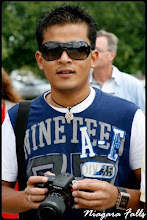

Big cities can sometimes seem like immense visual abstractions. The jam-packed juxtapositions of diverse styles of architecture — all compressed into dense overlapping vertical spaces — can be seen as things of rare man-made beauty.
These soaring glass-walled environments also invite a sometimes perverse delight in voyeurism. Michael Wolf’s new photobook, The Transparent City, captures both of these aspects nearly perfectly in his recent photographic study of downtown Chicago.
Someone described this work as “Hopper meets Blade Runner,” and I might add a third reference: Hitchcock’s Rear Window.
Wolf positions himself on rooftops or in the windows of opposing buildings to get the most amazing vantage points for each scene. He waits for perfect light at the time of day when twilight and interior light render the building walls nearly invisible. An incredible large format camera with a 112-megapixel digital back captures and reveals exquisite details. It's a stunning combination.
Midway through the project, which started with its focus on the architecture of Chicago, Wolf discovered that when he enlarged his photos he could actually see what was going on in nearly every window of every building. Indeed, one office worker in a huge building opposite Wolf’s camera was giving him the finger in a gesture of contempt for his supposed spying!
This after-the-fact discovery added a new dimension to the project for Wolf. He started to look inside as well as outside, and to play one aspect against the other. These sparkling, huge photos became complexly rich statements about daily urban life in the 21st century.
Natasha Egan writes in her introduction to the book:
While it has been more common for photographers to glorify Chicago’s unique architecture and environmental context, Wolf depicts the city more abstractly, focusing less on individual well-known structures and more on the contradictions of architectural styles when visually flattened in a photograph. Unlike the impermeable windows in his Hong Kong pictures, his photographs of Chicago look through the multiple layers of glass to reveal the social constructs of living and working in an urban environment.
But far from titillation, Wolf discovers a rather mundane loneliness in his windows — people staring into computers or gazing at television sets or napping alone in armchairs. Many residents seem numbly isolated in sterile, generic boxes of rooms suspended in the sky away from any kind of grounded reality.
Writer and blogger Geoff Manaugh sees a direct correlation between these photographs and the psychological effect depicted in the 1975 novel by J. G. Ballard, High-Rise. Ballard suggested that the nature of these buildings produces a "new social type." Manaugh continues:
These people have "minimal needs for privacy," living more "like an advanced species of machine in the neutral atmosphere" of the building. Like an architectural mood stabilizer — or spatial Prozac — the building itself gives rise to an "unemotional personality," someone who spends time "waiting for something to happen" while doing nothing themselves.
Wolf accentuates this feeling of alienation and "no exit" with tight cropping of each photograph, so it is difficult to find any reassuring context even in a vast panorama. “You can never go off the building surface and find the sky,” Wolf says. “I make these images so that the only escape is to peer into one of the windows.”
It is especially disturbing to realize that these are the kind of views that urban dwellers experience every day.
The book is beautifully printed in a large, luxurious format on beautiful paper. Three insightful essays accompany the photographs helping to make the entire experience very rich and rewarding. Recommended.
— Jim Casper
The Transparent City
by Michael Wolf

0 comments:
Post a Comment